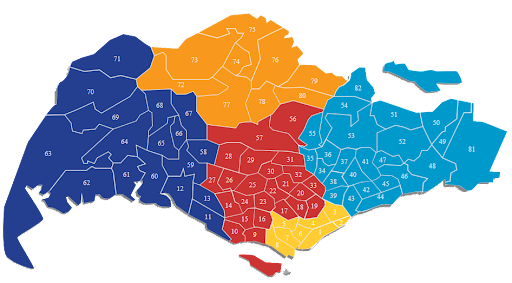The average increase in land betterment fees for commercial, residential, and industrial uses is between 0.1% and 1.6%
The average rate of increase for the use of civic, religious, and community institutions is 2.9%; rates for the use of hotels, hospitals, and nursing homes stay the same.
August 30, 2025
CONDOsingapore.com
For the six months beginning September 1, 2025, the government has increased land betterment charge (LBC) rates for commercial, residential, and industrial use groups by an average of 0.1% to 1.6%.
For the privilege of improving the use of certain sites or constructing larger projects on them, developers pay LBC.
Additionally, LBC rates for places of worship and civic and community institutions have increased, on average by 2.9%.
Rates for the use group in hotels, hospitals, and nursing homes, however, have not changed.
After being reviewed by the Singapore Land Authority (SLA) and discussed with the taxman's chief valuer (CV), LBC rates are released twice a year on March 1 and September 1.
The rates take into account recent land sales and are based on the CV's evaluation of land values.
In Singapore, LBC rates are reported based on use groups in 118 geographic sectors.
LBC rates for places of worship and civic and community institutions have increased across all 118 geographic sectors. The increases fall between 3 and 4 percent.
Following the 5.8% increase in the previous revision on March 1, 2025, this use group has seen an average increase of 2.9%.
"After ten years of no change, we think this is a continued gradual adjustment to align with the general real estate sectors," stated Tricia Song, head of research for South-east Asia at CBRE.
Landed and non-landed residential use groups
LBC rates have increased by an average of 0.4% in the landed residential segment. LBC rates will rise in 13 sectors, with increases ranging from roughly 3 to 5%. The other 105 sectors remain unchanged.
Chua Yang Liang, head of research and consulting for JLL in South-east Asia, stated: "The chief valuer has been motivated to raise LBC rates across 11% of the sectors islandwide due to the landed housing market's ongoing strong upward pressure."
Geographical sectors 66, 67, 68, 69, and 70—which include desirable Good Class Bungalow locations like Nassim Road, Gallop Road, Dalvey Road, Ridout Road, and Chatsworth Road—are among those with higher LBC rates for the landed residential use group, according to Nicholas Mak, chief research officer at Mogul.sg.
On average, the rates for residential non-landed use have gone up by 0.7%. Rates have increased by roughly 2 to 15% in 19 sectors. One sector's rate was lowered by roughly 4%, while rates for the other 98 sectors remained unchanged.
The largest increase, 15.4%, was recorded in Sector 96, which encompasses the Bayshore region. This was ascribed by analysts to the March state land tender site bid of S$1,388 per square foot per plot. At a state tender, this was the highest land price for a 99-year-old suburban private housing site.
Analysts credit Sector 104's impressive performance in the Chuan Grove site state tender last month for the 9.5% increase in the LBC rate for non-landed housing use.
Commercial and industrial sectors
LBC rates have increased by an average of 1.6% in the industrial sector. For forty-five sectors, rates have increased by three to ten percent. The other 73 sectors remain unchanged.
The largest increase in LBC rates for industrial use, 9.9%, was reported by Sector 114.
Industrial government land sites in Tukang Innovation Drive, Jalan Papan, Gul Drive, and Pioneer Road were sold for prices that were significantly (10–176%) higher than the land value implied by the LBC rate for industrial use in the sector as of March 1, 2025, according to JLL's analysis.
The average increase in LBC rates for the commercial use group has been 0.1%. In four geographic sectors, rates have increased by roughly 3%. The remaining 114 sectors remain unchanged.
According to JLL's analysis, sector 115, which encompasses the Sembawang and Woodlands area, is one of the four sectors with a 3.3% rate hike. This was ascribed by analysts to the Northpoint City South Wing deal.
According to Dr. Chua of JLL, "there were no reliable transactions for development purposes in the commercial segment."
No hindrance to confidence
According to Dr. Chua, the most recent LBC rates shouldn't significantly slow down the market trend or erode investors' and developers' faith in the underlying real estate market. "LBC mainly impacts developments with higher land values and development intensities," he continued.
Similarly, Mak stated that the majority of the areas impacted by the LBC rate increases for non-landed residential use are in the suburbs. "For developers who have not yet locked in their LBC for their projects based on the prior LBC rates, these will slightly raise the development costs," he stated.
But since LBC typically only accounts for a small percentage of the overall project development costs, no developer will worry. Additionally, "in the current thriving real estate market, developers will be able to pass the higher LBC on to buyers in the form of higher housing prices," he continued.





 Reply With Quote
Reply With Quote
